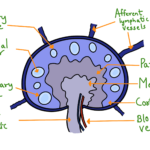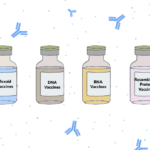During evolution, many variations have been accumulated in different plant species. These variations are in the form of mutations such as insertion, deletion, inversion and substitution. These variations give rise to diversity. Diversity is considered very important in modern farming as agronomically useful variants can be identified from diverse individual plants within the same species. Once these variants are identified, they need to be characterized, and the agronomically important characters need to be inherited into the next generation. Now, the question arises ‘How to identify these variants?’ The answer is by identifying ‘molecular markers’. Molecular markers include DNA variations arising majorly due to ‘Single Nucleotide Polymorphism’. One of the processes to identify these molecular markers is PCR-based methods and include RAPD, RFLP, and AFLP. Let us consider them one by one.
Randomly Amplified Polymorphic DNA (RAPD):
The technique is also known as Arbitrarily Primed PCR (AP-PCR). Usually, PCR amplifies a DNA sequence using highly specific primers, but RAPD primers are selected arbitrarily to amplify a DNA sequence. The technique uses a 9-10 base pair long primer with low stringency, which binds to many locations in the genomic DNA and amplifies the part. RAPD is designed in such a way that it finally yields genomic band patterns that can be used for comparative analysis. The principle behind comparative analysis using band patterns is that RAPD two different individuals often produce two different band patterns. The most significant limitation of RAPD is that it is challenging to reproduce the results obtained via RAPD.
Restriction Fragment Length Polymorphism (RFLP):
RFLP is a technique in which a DNA molecule is allowed to cut by using specific enzymes known as restriction enzymes or restriction endonucleases. As a result, several fragments are produced after the digestion is complete, and these fragments are known as Polymorphs. Once the digestion is complete, RFLP can be performed by hybridization. In the hybridization method, the fragments are first separated onto an agarose gel, and after separation, the fragments are transferred onto a nitrocellulose/ nylon membrane. Radiolabeled DNA probes are used to hybridize with the transferred fragments, and the fragments are visualized as autoradiographs. Along with plant genetics, this technique is widely used in DNA fingerprinting and forensics.
Amplified Fragment Length Polymorphism (AFLP):
AFLP is a highly sensitive technique based on the principle of both RAPD and RFLP. In this technique, genomic DNA is isolated and restriction digested with specific restriction enzymes. The fragments that are generated are ligated with adapters of the restriction enzymes. These adaptor sequences function as primer binding sites for the PCR reaction. This first amplification process is known as preamplification. The primers used in this amplification process have adapter sequences with only one selective nucleotide. This amplification product is used as a template for the next selective amplification step on which primers having adapter sequence and 2-3 selective nucleotides are used. The DNA product thus obtained is separated onto an agarose gel, and a DNA fingerprint is identified by autoradiograph.




